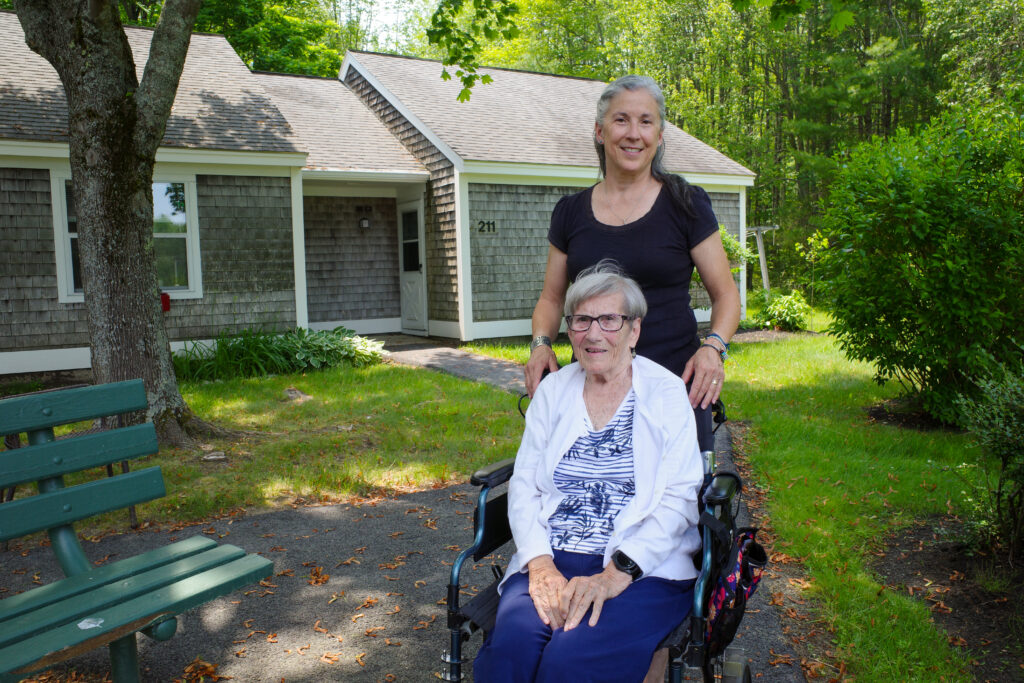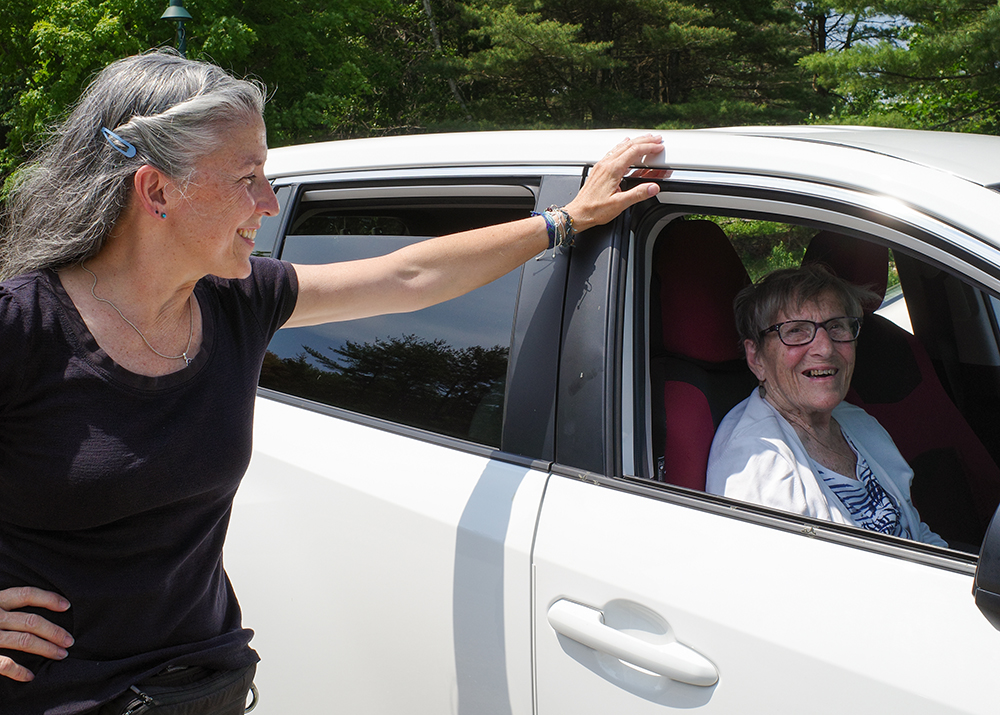a.m.k. shared her story as part of MECEP’s Closing the Gap: Maine’s Direct Care Shortage and Solutions to Fix It report. Click here to read the full report.
a.m.k worked in hospitality before moving in with her 86-year-old mother and taking on her full-time care. Since taking on that role four years ago, a.m.k received certification as a personal support specialist, qualifying her to receive some compensation for the care she provides.
I was told there might be a 30 or 60 day wait before my mother would get to the top of the waiting list for home and community-based services. Even though mom qualified for the program, and I was living with her and providing the care, it took over a year before I got paid as a caregiver. Thank goodness for the pandemic unemployment money. We never would have survived on just her income. There were so many out-of-pocket expenses beyond food and rent. My mom could no longer drive, so I had to get a car. I now have 12,000 miles on my car and all but about 50 came from taking my mom somewhere. I wonder how much I would have been reimbursed for that if transportation was a covered expense?
I was asked how I spend my time as a caregiver. There are at least 25 regular tasks that are a part of managing my mom’s life. Some are financial, some are medical, some are housing-based, and many are related to personal care, hygiene, and physical therapy. I’m doing the job of the entire staff of a nursing home. I work 24 hours a day, seven days a week, providing care and being available for anything that happens in the middle of the night or during the day. I get paid for 24 hours per week.

When you think about a nursing home – the number of employees, the property, the maintenance, the human resources, the paperwork, the oversight – and then you think about home-based care, with one person doing all of that, I would say I deserve more. I’m managing my own long term care facility right here. I’ve worked just over 1,300 days as a full-time caregiver over the last four years. That’s about a quarter of a million dollars in lost wages if I were paid for every hour I worked at my current wage.
I’ve barely contributed to social security in the four years I’ve been a caregiver. I don’t have retirement savings. There are 53 million unpaid caregivers. Guess who’s going to be needing the safety net because they weren’t paid for the 5, 10, or 15 years they cared for a loved one? It’s all going to cost more in the long run.
If we were provided incentives, training and support, if we got rid of the red tape, and were paid a fair wage for every hour worked, it would reduce costs. We’d be able to pay market rate for an apartment or even buy a house, freeing up subsidized housing for others who really need it. Making this job a viable choice for family members would reduce over-stays in hospitals and the stress on long-term care facilities. We’d be able to contribute more to Social Security and save for retirement. We’d also spend a lot more money in our community.
Long-term care is anywhere, and we are the front line. Pay us. Pay us for every hour we work.
We shouldn’t have to leave the workforce to take care of a loved one. We should be able to switch jobs to provide that care if we want to. It should be an option.




